usz
Newbie
Hey everybody. In december, I got this wonderful Hohner Verdi 3b at a local second hand for 450 Swedish Krones (40 eur). I didn't play accordion before, but I study music in school and was (still am) professional at guitar. Since then I've been playing it more and more, learning about the history and community around this instrument.
I found a post on this forum with a list of all Hohner models (I believe, maybe it was all accordion models from known brands), and it said that this model is from late 30s - early 40s. And the age is showing.
It is more than playable, and I've been enjoying it a lot, but wanted to get it into a better shape. This website, https://accordionrevival.com/ACCORDION_REPAIR1.php#Why_replace_old_leathers?, says that old bent leather valves can cause trouble with tuning, which my accordion seems to have on certain keys, nothing critical, just inconstant tremolo, and a lot of it is probably due to the valves, since it changes the pitch as I draw and/or blow.
I thought that replacing the leathers should be my first course of actions, since I already opened my accordion before and saw how bent they were.
This time, when I opened it to take the photos, I also noticed that one of the reeds on the bass side has fallen off. It must have been a recent issue, since it wasn't like that the last time I opened it, which was in December. You can see it lying in the corner of one of the photos. I then managed to put it back in, after taking off the bellows, and noticed that there was already a mark from, what I think was a previous nail, suggesting that reed has been insecure for a while now (you can see what I mean in the close up photo). Does it mean they also should probably be re-waxed?
Besides that 2 of the bass keys on the last (the diminished chord) row are getting stuck if I press on them. But I only noticed it right now, since I didn't really used that row. Should be fixed, but is not something critical for me. Unless I should be worried about it, let me know.
So what do you folks think I should do? Should I try replacing the leathers myself and see how it goes from there or give it to a qualified repairman? Part of me wants to do it myself, since I want to learn more about the instrument and it's just nice to do things yourself. I'm also young and have a lot of free time still. But maybe it will be way out of my league, let me know what you think.
P.S. I really like the sound of this one. I found another accordion at a different second hand, it was much smoother to play, much smoother and nicer, not as rough to play and more responsive, with an according price of 267 eur. But it just lacked something in the sound, that I can't describe. Maybe mine sounds better to me becuase it has very old wood, I'm not sure.
Photos:
1-3: Exterior.
4: Bass side reed blocks. You can see the fallen reed at the top.
5: The said reed mentioned in 4, but inserted back.
6-7: Treble side, at 2 different angles.
I found a post on this forum with a list of all Hohner models (I believe, maybe it was all accordion models from known brands), and it said that this model is from late 30s - early 40s. And the age is showing.
It is more than playable, and I've been enjoying it a lot, but wanted to get it into a better shape. This website, https://accordionrevival.com/ACCORDION_REPAIR1.php#Why_replace_old_leathers?, says that old bent leather valves can cause trouble with tuning, which my accordion seems to have on certain keys, nothing critical, just inconstant tremolo, and a lot of it is probably due to the valves, since it changes the pitch as I draw and/or blow.
I thought that replacing the leathers should be my first course of actions, since I already opened my accordion before and saw how bent they were.
This time, when I opened it to take the photos, I also noticed that one of the reeds on the bass side has fallen off. It must have been a recent issue, since it wasn't like that the last time I opened it, which was in December. You can see it lying in the corner of one of the photos. I then managed to put it back in, after taking off the bellows, and noticed that there was already a mark from, what I think was a previous nail, suggesting that reed has been insecure for a while now (you can see what I mean in the close up photo). Does it mean they also should probably be re-waxed?
Besides that 2 of the bass keys on the last (the diminished chord) row are getting stuck if I press on them. But I only noticed it right now, since I didn't really used that row. Should be fixed, but is not something critical for me. Unless I should be worried about it, let me know.
So what do you folks think I should do? Should I try replacing the leathers myself and see how it goes from there or give it to a qualified repairman? Part of me wants to do it myself, since I want to learn more about the instrument and it's just nice to do things yourself. I'm also young and have a lot of free time still. But maybe it will be way out of my league, let me know what you think.
P.S. I really like the sound of this one. I found another accordion at a different second hand, it was much smoother to play, much smoother and nicer, not as rough to play and more responsive, with an according price of 267 eur. But it just lacked something in the sound, that I can't describe. Maybe mine sounds better to me becuase it has very old wood, I'm not sure.
Photos:
1-3: Exterior.
4: Bass side reed blocks. You can see the fallen reed at the top.
5: The said reed mentioned in 4, but inserted back.
6-7: Treble side, at 2 different angles.
Attachments
-
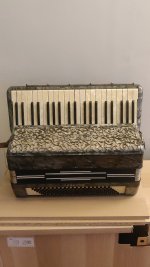 2024-02-21-17-26-56-591.jpg209.9 KB · Views: 49
2024-02-21-17-26-56-591.jpg209.9 KB · Views: 49 -
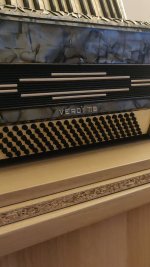 2024-02-21-17-27-03-151.jpg221.2 KB · Views: 38
2024-02-21-17-27-03-151.jpg221.2 KB · Views: 38 -
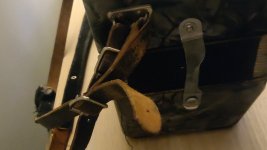 2024-02-21-17-27-18-680.jpg133.9 KB · Views: 44
2024-02-21-17-27-18-680.jpg133.9 KB · Views: 44 -
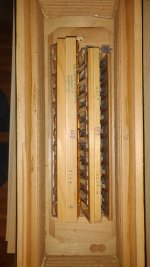 2024-02-21-17-38-23-295.jpg233.7 KB · Views: 49
2024-02-21-17-38-23-295.jpg233.7 KB · Views: 49 -
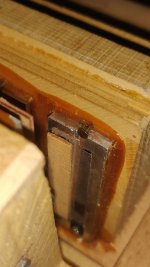 2024-02-21-18-05-17-177.jpg172 KB · Views: 48
2024-02-21-18-05-17-177.jpg172 KB · Views: 48 -
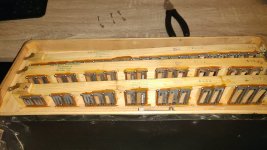 2024-02-21-18-08-59-952.jpg229.6 KB · Views: 53
2024-02-21-18-08-59-952.jpg229.6 KB · Views: 53 -
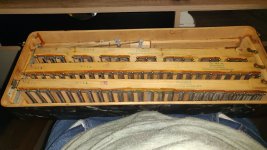 2024-02-21-18-09-30-327.jpg241.5 KB · Views: 49
2024-02-21-18-09-30-327.jpg241.5 KB · Views: 49
